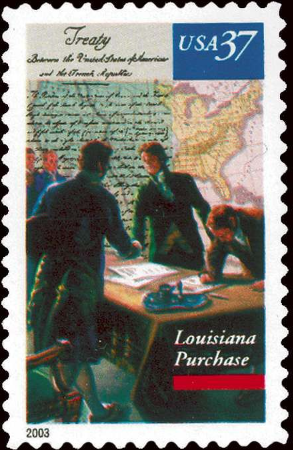Description
The Louisiana Purchase was a land transaction in 1803 between the United States and France in which the U.S. acquired approximately 827,000 square miles of land west of the Mississippi River for $15 million. The Louisiana Purchase nearly doubled the size of the United States and was the largest land purchase in U.S. history.
The purchase was precipitated by the desire of the French government to reduce its financial obligations in the New World, especially in the wake of the Haitian Revolution in 1804. France had acquired the region through its 1682 colonization of the Mississippi Valley and had long maintained a presence in the region, but the French government wanted to unload its holdings in North America.
The U.S. was eager to acquire the land to expand its borders and open up new areas for exploration, settlement and commerce. The Louisiana Purchase agreement was negotiated by Robert Livingston, U.S. minister to France, and James Monroe, future U.S. president. The purchase was ratified by the U.S. Senate in October 1803 and was completed in December 1803.
The Louisiana Purchase provided the U.S. with land that included parts of 15 present-day states, including all or parts of Arkansas, Missouri, Iowa, Oklahoma, Kansas, Nebraska, Minnesota, North Dakota, South Dakota, Wyoming, Colorado, New Mexico, Texas, Montana, and Louisiana. The purchase opened up the territory for settlement and eventual statehood, and it helped the U.S. become a major player on the world stage.





Reviews
There are no reviews yet.